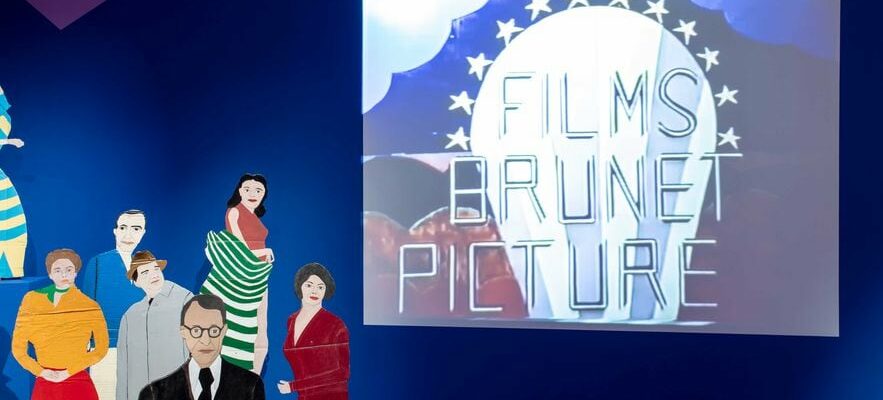The cinematographic saga of Guy Brunet is first and foremost that of his father, Charles. At the beginning of the 1930s, this electrician-photographer roamed the villages of Aveyron with his projector to present films free of charge to the inhabitants, before creating his own cinema, the Caméo, in Rignac. The Plaza and the Ideal will follow in Cagnac-les-Mines, in Tarn. Guy, born in 1945, the youngest of three boys, contracted the paternal virus in his early childhood. The great figures of Hollywood’s golden age, which saw actors turn into stars, became his traveling companions. John Ford, Gene Kelly and Charles Laughton populate his childhood dreams, like the feature films of Marcel Pagnol, Vittorio De Sica, Fritz Lang and Alfred Hitchcock: “The stars were part of my second family. I have always lived with them as if they were my brothers or parents who were in front of me on the screen.”
From the age of 6, Guy sketched sketches inspired by his favorite productions. Ten years later, he became a projectionist alongside his father and wrote his first screenplays, in which he changed the destiny of his favorite heroes: since, to his great chagrin, they often died at the end of the story, he twists the plot to give it a happy ending, or he adds himself as protagonist, director or producer – sometimes all three at the same time. Thus, for his revisitation of Kwai River Bridge, it is he who is in charge of the production, while David Lean is credited in the credits as his assistant.
All the films of this unique filmmaker are built on the principle of “shot-edited”.
/ © N. Dewitte / LaM
Guy Brunet never gave up. To keep the pot boiling, he toiled in the factory for a long time, before devoting himself full-time to the seventh art from 1986. In his house in Viviez, north of Rodez, he paints and assembles recycled materials. , creates silhouettes, decorations, posters. In 2001, he bought a VHS camera, founded the company Paravision and made his first film in homage to his idol, Cecil B. DeMille. Since then, fourteen others have emerged, including When dance is queen (2002), The Magical World of the Lumière Brothers (2012) and Meet in Evian (2018), the longest of which, The great parade of soap operas (2015), lasts… eight hours and twenty minutes. All are built on the principle of “shot-editing” dear to cinema. In the film studio set up at his home, he films, in chronological order, successions of shots with his silhouettes positioned in front of cardboard sets, then frames the actors for the duration of a dialogue, while lending them his voice, which it modulates at will. By borrowing music from composers for the big screen or creating his own arrangements, he builds his soundtracks, thus controlling the entire production chain.
In Villeneuve-d’Ascq, the LaM, which has been following Brunet’s extraordinary journey for several years to ensure the safeguarding of a work and archives now under threat, is dedicating a fascinating retrospective to him until September 29. Under the curatorship of Christophe Boulanger and the title My father’s cinema, the exhibition traces the filmmaker’s creative process using a vast selection of silhouettes, sets, posters, and original scenarios drawn and written over seven decades of devouring passion. And, to the question of who this unclassifiable person really is, on the border between art brut and cinema, it is the person himself who responds with a pirouette: “I am a healer, I treat the spectators .”
